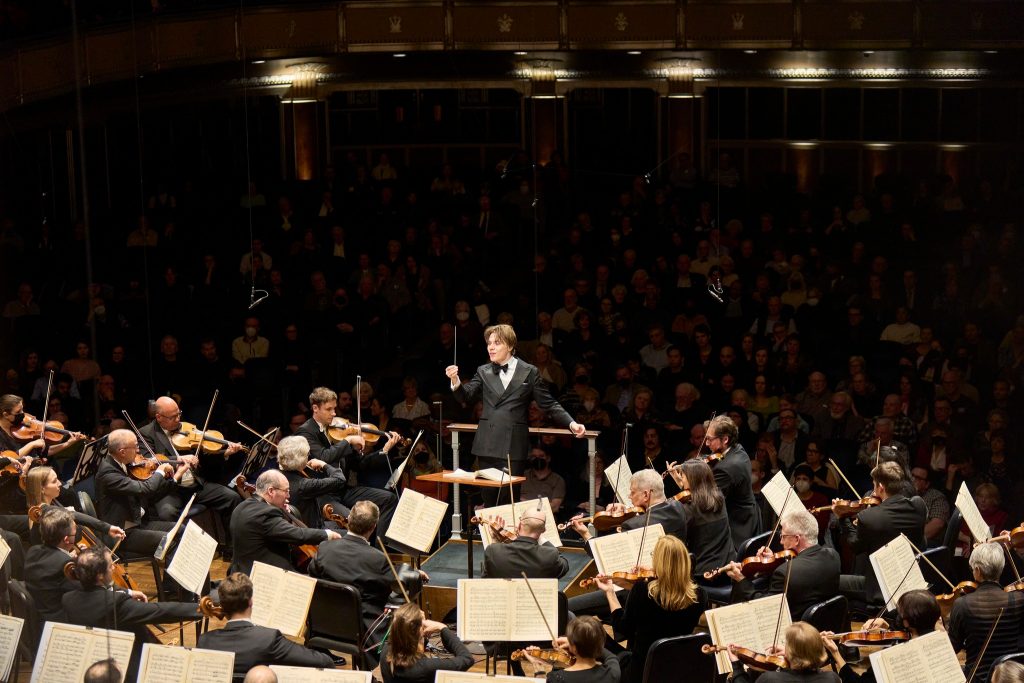by Daniel Hathaway
At 7 pm, the Baldwin Wallace Symphonic Wind Ensemble, Symphonic Band and Community Arts School Dance Concert includes a staging of Milhaud’s La Creation du Monde ballet.
Tonight at 7:30, guest conductor Klaus Mäkelä continues his second week of Cleveland Orchestra performances featuring pianist Jean-Yves Thibaudet in George Gershwin’s Concerto in F. Mäkelä begins the program with Darius Milhaud’s Le Boeuf sur le toit, and ends with Igor Stravinsky’s The Rite of Spring (program repeated Saturday at 8).
At the same hour, the Cleveland Museum of Art presents Sybarite5, “chamber music’s most dynamic ensemble, taking listeners on a musical journey of staggering breadth and depth with new works by living composers as well as the group’s favorite selections from Radiohead, John Coltrane, Komitas, Astor Piazzolla, and Pete Seeger.”
For more performances, visit our Concert Listings.
TODAY’S ALMANAC:
by Jarrett Hoffman
Born on this date in 1892 in Saint-Maur-des-Fossés, southeast of the City of Light, Germaine Tailleferre was the only female member of the post-World War I group of composers known as Les Six. Her varied output included operas, ballets, film music, concertos, songs, and orchestral and chamber music.
One of the best ways to celebrate her career is by listening to her Le marchand d’oiseaux. Full of fresh-flavored neoclassicism, it’s no wonder that it was the Ballet Suédois’ most frequently performed ballet in the 1920s. A performance led by Perry So (with perhaps the BBC Welsh National Orchestra, as one commenter suggests) is available on YouTube.
Another highlight is her impressionistic and deeply atmospheric Ballade for piano and orchestra, heard here in a recording by the Deutsche Radio Philharmonie Saarbrücken Kaiserslautern, led by Pablo González and featuring Florian Uhlig as soloist.
It’s also important to understand how sexism obstructed Tailleferre’s career and legacy, a topic that Timothy Diovanni (now an arts writer for Dallas Morning News) explored in two articles written for Women’s Philharmonic Advocacy in 2017.
In the first essay, Diovanni delves into the men in her personal life who impeded her artistic progress: her discouraging, hostile, and verbally abusive father, as well as her two husbands, whose behavior ranged from jealous to controlling, threatening, and violent.
The second covers the ways that critics and historians have described her work — often dismissively, using gender-coded language, and training their focus on her appearance rather than her music.
In history, it’s very easy to oversimplify the lives of the characters who appear along the way, so that they barely seem like real people at all. Indeed, many well-regarded encyclopedias do just that with their short and useful summaries that, in the end, leave out so much about a person’s life. On that note, Diovanni makes an important point near the conclusion of his first article:
Tailleferre is not just an eleven-letter name in a music history textbook, but rather she was a real, living woman who had to negotiate social pressures and overcome tremendous injustices.



